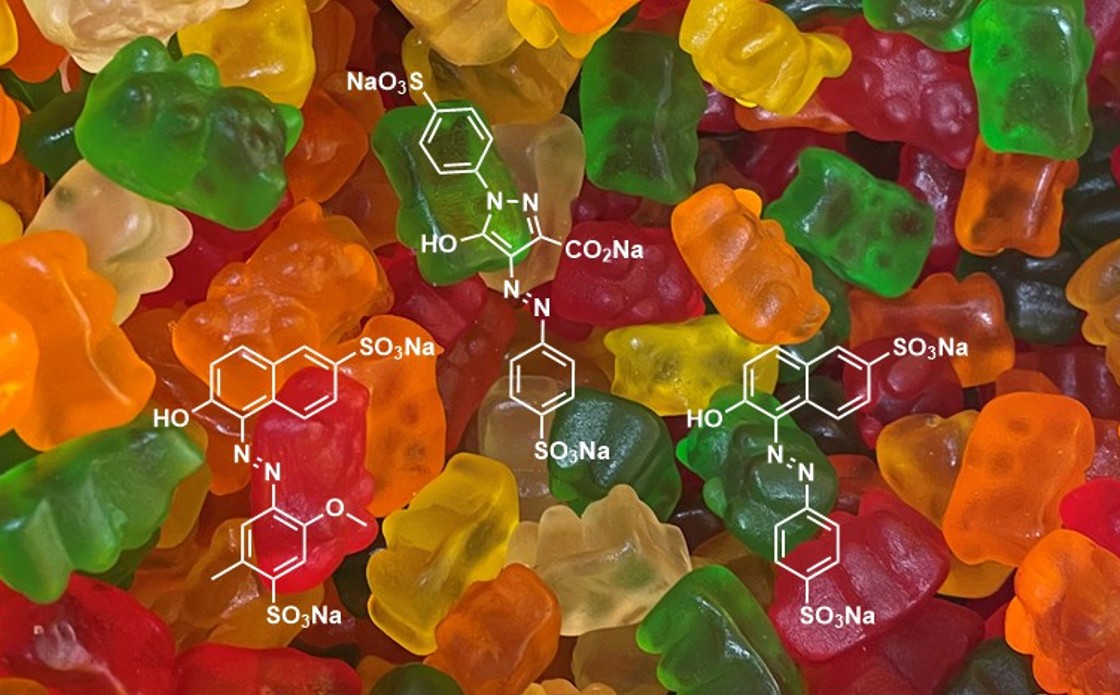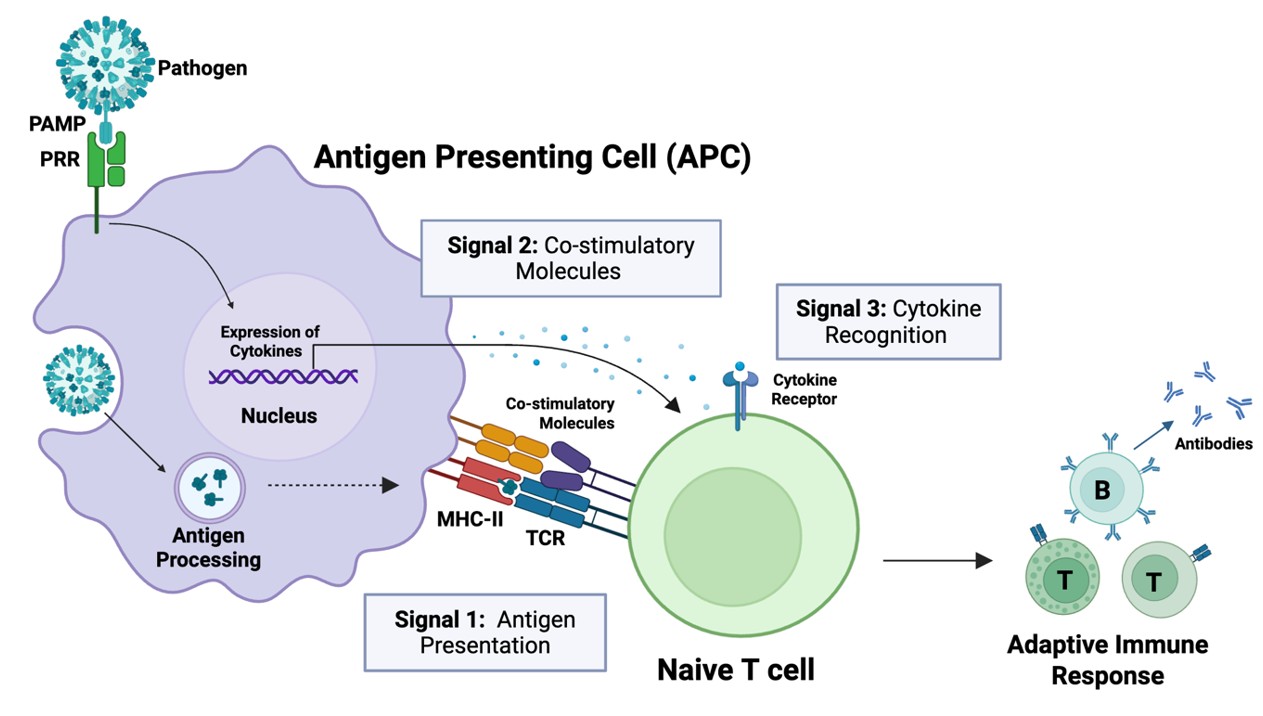Canine chemistry: nutritional biochemistry and chemical safety

Chemical structure of C26H26, named ‘doggycene’ because its chemical structure resembles a dog.
Introduction
Over thousands of years, canines have evolved remarkable adaptations that have allowed them to become highly attuned to chemical signals in their environment. These adaptations have led to the development of specialised biochemical pathways and sensory detection capabilities that are essential for their survival and various roles in human society. This article explores the basic biochemical and chemical conditions required for canine life, focusing on nutritional requirements and the effects of various chemicals on their health. It provides insight into the amazing chemical detection capabilities of dogs, which enable them to perform a range of specialised tasks. In addition, it discusses the reason wet dogs smell bad and the potential risks posed by certain chemicals in grooming products.
Nutritional biochemistry
In order to maintain optimal health, dogs require a balanced diet consisting of both macronutrients (proteins and fats) and micronutrients (vitamins and minerals). Each of these components play a key role in various physiological processes, contributing to overall canine health.
Protein
Proteins are polymers of amino acids linked by peptide bonds. Essential amino acids such as lysine, methionine and taurine must be obtained through diet because dogs cannot synthesise them by themselves1.Taurine is a β-amino sulfonic acid2, particularly important for cardiovascular health, retinal function and bile salt formation. Proteins are essential for maintaining muscle mass, repairing tissues, producing enzymes and hormones and supporting immune function. Inadequate protein intake can lead to muscle wasting, weakened immune response and impaired organ function. High-quality protein sources for dogs include meat, fish, eggs and some plant-based proteins such as soy.
Fats
Fats or triglycerides are esters derived from glycerol and three fatty acids. They provide a concentrated source of energy and are necessary for the absorption of fat-soluble vitamins (A, D, E, K)3. Essential fatty acids such as omega-3 (α-linolenic acid) and omega-6 (linoleic acid) play critical roles in inflammatory responses, cell membrane fluidity, and signal transduction pathways. Omega-3 fatty acids, through their conversion to eicosapentaenoic acid (EPA) and docosahexaenoic acid (DHA), are involved in anti-inflammatory processes and cognitive function4. Fats also serve as a reserve of energy, insulate the body, and protect vital organs. They contribute to the health of the skin and coat, maintaining hydration and barrier functions. Sources of healthy fats for dogs include fish oil, flaxseed oil and chicken fat.
Vitamins and minerals
Vitamins are organic compounds required in small amounts for various biochemical functions. Water-soluble vitamins (B vitamins and C) are involved in enzymatic reactions and antioxidant defences. Fat-soluble vitamins (A, D, E, K) play a role in vision, bone health, antioxidant activity and blood clotting.
The minerals calcium, phosphorus, potassium, sodium and magnesium, which support bone health, nerve function and muscle contraction, are one of the pillars of a dog's metabolism. In addition to essential minerals, trace elements such as zinc, iron, copper, manganese and selenium are particularly important. Trace elements react with proteins, enzymes, vitamins and hormones, activating or regulating the function of these molecules and causing changes in their molecular structure. Trace elements affect reproduction and are essential for antioxidant protection and immune response5.
Sensory detection
One of the most striking aspects of canine biology is their extraordinary sensory detection abilities. Canines have highly developed olfactory and auditory systems that can detect a wide range of chemical and physical signals in the environment. Humans use these abilities for a variety of purposes, from traditional hunting and herding to more modern applications such as search and rescue, drug detection, and medical diagnostics (Fig. 1).
The canine olfactory system is extraordinarily complex, possessing approximately 300 million olfactory receptors compared to 5-6 million in humans. These receptors are G protein-coupled receptors located in the olfactory epithelium. Odour molecules bind to these receptors, initiating a signal transduction cascade that generates an action potential and sends it to the olfactory bulb. The combined coding of the receptor activation allows the dog to discriminate between a large number of odours and to detect very low concentrations of substances, as low as parts per trillion6.

Fig. 1. A trained detector dog checks parcels for invasive pests7.
This ability can be used to detect hazards such as drugs8 and explosives9 or diseases such as cancer. Dogs can identify areas contaminated with hazardous substances such as toluene, being able to detect about 0.1g of these substances over long distances10 which conventional equipment is unable to do. Customs officers and border control agents use trained service dogs to detect illicit drugs such as cocaine, heroin, methamphetamine and cannabis. Many studies have now demonstrated the ability of dogs to detect various diseases such as lung and breast cancer.11
Chemistry of wet dogs
Dogs tend to give off an unpleasant odour when they get wet. Biologically, the dog's coat contains a large number of bacteria and yeasts yielding enough bioactivity to produce a range of volatile organic compounds. When the dog gets wet, water contact helps to break down the micro-excretions of bacteria and yeast in the dog hair. As the water evaporates from the dog's coat, it picks up some of the volatile compounds and increases the humidity of the air around the dog, further exacerbating the odour via the ability of humid air to hold higher concentrations of odour molecules.

One study compared the difference between the compounds emitted by dry and wet dog hair12. This study found that many groups of compounds exhibited an increase when water was added: strong sulfurous, medicinal or faecal odours (dimethyl trisulfide, phenol, p-cresol), mushroom odours (1-octen-3-ol), fruity odours (2-nonanone), floral odours (α-damascenone), and earthy odours (2,3-diethyl-5-methylpyrazine), as well as branched-chain or compounded aldehydes (2- and 3-methylbutyl aldehyde, isobutyraldehyde, 2-octenal, acetaldehyde, benzaldehyde, phenylacetaldehyde, 2-nonanal). These compounds included a range of individual odours, from ‘sulfurous’ to ‘medicinal’ to fruity and ‘earthy’.
Chemicals hazardous to canine health
Canine skin is more fragile and thinner than human epidermis, so care needs to be taken when coming into contact with potentially harmful chemicals. Due to their faster metabolic cycles, dogs are particularly vulnerable to the adverse effects of certain substances commonly found in grooming and household products.
Sodium lauryl sulfate (SLS) and sodium lauryl ethoxylate sulfate (SLES)

These surfactants are widely used in shampoos and cleaning agents for their ability to produce foam and remove oils. However, they can disrupt the lipid barrier of the skin, leading to irritation and dryness. SLS and SLES, in particular, can cause denaturation of skin proteins, leading to inflammation and increased permeability to other irritants. Chronic exposure has been linked to skin sensitisation and potential carcinogenic effects due to the formation of nitrosamines.
Isopropyl alcohol
Isopropyl alcohol is a common solvent and antiseptic, but it can have deleterious effects on canine skin. It strips away the natural oils that protect the skin, leading to dryness and cracking. This disruption can create entry points for pathogens, increasing the risk of infections. Additionally, inhalation or ingestion of isopropyl alcohol can cause systemic toxicity, leading to symptoms such as dizziness, headaches and gastrointestinal disturbances.13
Diethanolamine (DEA), methanolamine (MEA), triethanolamine (TEA)
These compounds are used as emulsifiers and foaming agents in various cosmetic and cleaning products. They can react with nitrites, often present as preservatives, to form nitrosamines, which are potent carcinogens. DEA, MEA, and TEA can also cause skin irritation and sensitisation, leading to allergic reactions and dermatitis. Their use in products intended for dogs should be minimised to avoid long-term health risks14.
Synthetic fragrances
Synthetic fragrances are composed of numerous volatile organic compounds derived from petrochemicals. Many of these compounds, such as phthalates and synthetic musk, are known endocrine disruptors that can interfere with hormone function. Dogs’ heightened olfactory sensitivity makes them particularly susceptible to the irritating effects of strong fragrances, which can lead to respiratory distress and behavioural changes. The potential for bioaccumulation and long-term health impacts underscores the need for fragrance-free or naturally scented products for dogs.
Amitraz, permethrin, cyphenothrin
These synthetic pyrethroids and formamidine pesticides are commonly used in flea and tick control products. While effective in killing parasites, they pose significant risks to canine health. Amitraz can interfere with the central nervous system by inhibiting monoamine oxidase15 leading to symptoms such as sedation, bradycardia, and hypothermia. Permethrin and cyphenothrin can cause neurotoxicity, manifesting as tremors, seizures and even death in severe cases.
Conclusions
Nutritional biochemical studies have revealed the profound impact of a balanced diet on canine health, emphasising the importance of macronutrients such as protein and fat, as well as vital micronutrients. The advanced sensory detection capabilities of dogs play an important social value, from detecting disease to identifying hazardous substances. In addition, awareness of chemical hazards in pet grooming and household products highlights the need to protect dogs from potential health risks. By combining knowledge of nutritional biochemistry with an understanding of chemical safety, we can improve the health, longevity and quality of life of our canine companions.
References
- National Research Council, Division on Earth, Life Studies, Committee on Animal Nutrition, Subcommittee on Dog & Cat Nutrition. Nutrient requirements of dogs and cats. National Academies Press, 2006.
- Lourenco, R.; Camilo, M. Nutr. Hosp. 2002, 17, 262-270.
- Kuksis, A. Fat absorption, CRC Press, 2018, 65-86.
- Song, C.; Shieh, C.-H.; Wu, Y.-S.; Kalueff, A.; Gaikwad, S.; Su, K.-P. Progress in lipid Res. 2016, 62, 41-54.
- Stojiljković, S. EC Nutrition, 2023, 18, 01-10.
- Padodara, R.; Jacob, N. Indian J. Vet. Sci. 2014, 2, 1-14.
- U.S. Department of Agriculture, A detector dog, 2014, Flickr, https://flic.kr/p/23K4WiW.
- Lorenzo, N.; Wan, T.; Harper, R.J.; Hsu, Y.-L.; Chow, M.; Rose, S.; Furton, K.G. Anal. Bioanal. Chem. 2003, 376, 1212-1224.
- Jezierski, T.; Ensminger, J.; Papet, L. Canine olfaction science and law: Advances in forensic science, medicine, conservation, and environmental remediation, CRC Press, 2016.
- Arner, L.; Johnson, G; Skovronek, H. J. Haz. Mat. 1986, 13, 375-381.
- Kokocińska-Kusiak, A.; Woszczyło, M.; Zybala, M.; Maciocha, J.; Barłowska, K.; Dzięcioł, M. Animals, 2021, 11, 2463.
- Young, L.; Pollien, P.; Roberts, D.; Cline, J. WSAVA 2002 Congress Proc. 2002.
- 20 Dog Shampoo Ingredients to Avoid | Dogs Naturally, https://www.dogsnaturallymagazine.com/20-ingredients-dont-want-dogs-shampoo/ (accessed 25/07/2024).
- Lessmann, H.; Uter, W.; Schnuch, A.; Geier, J. Contact Dermatitis, 2009, 60 (5), 243-255.
- Dalefield, R. In: Veterinary Toxicology for Australia and New Zealand, Elsevier, 2017, Chapter 8 - Insecticides and Acaricides, 87-109.





